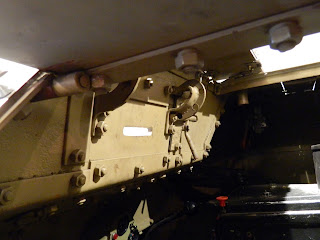
 TKS tank, also known as tankette, was major tracked vehicle of Polish Army in September 1939. In 1931, Military Institute of Research and Engineering (Wojskowy instytut Badan i Inzynierii) team lead by T. Trzeciak designed a vehicle based upon British MK VI tank. Throughout few years improvements were implemented, new engine, frontal shape was changed, new gun mantlet installed and new optical sights, Gundlach's Visor, allowing all round observation of battlefield from the inside. In August 1939 Tank Battalions equipped with TKS tanks were mobilized into Independent Companies and Squadrons, 13 tanks each, 1 commander tank with 2 platoons, 6 each. These units were attached to Brigades of Cavalry and Infantry Divisions, TKS tanks were also used in armored train units.
TKS tank, also known as tankette, was major tracked vehicle of Polish Army in September 1939. In 1931, Military Institute of Research and Engineering (Wojskowy instytut Badan i Inzynierii) team lead by T. Trzeciak designed a vehicle based upon British MK VI tank. Throughout few years improvements were implemented, new engine, frontal shape was changed, new gun mantlet installed and new optical sights, Gundlach's Visor, allowing all round observation of battlefield from the inside. In August 1939 Tank Battalions equipped with TKS tanks were mobilized into Independent Companies and Squadrons, 13 tanks each, 1 commander tank with 2 platoons, 6 each. These units were attached to Brigades of Cavalry and Infantry Divisions, TKS tanks were also used in armored train units.
Due to poor armor, only one machine gun, TKS tanks were mainly used as infantry support and reconnaissance units. TKS armed with 7.92 mm gun could not stand against armor or weapons of German light or medium tanks and heavy armored cars. Involvement in battles of TKS tanks is usually underestimated, due to it's original role, as TKS tank was not built for tank to tank combat. Tankettes with 7.92 mm gun were not able to hurt heavier opponent, but armed with 20 mm gun could cause serious damage to Panzer I's and II's.
TKS, Polish Light Reconnaissance tank
Crew: 2 (Driver & Commander),
Weight: 2,65 t,
Armor: Steel plates 3-10 mm,
Armanent: 1 x Hotchkiss, wz. 25, cal 7.92 mm,
Speed: Max 40km/h,
Engine: 6 Cilinder, water cooled, PL Fiat 122BC,
Fuel: Petrol, 70 l tank, fuel consumption 38 l/100 km on road, 70 l/100 km off road
Range: On Road 180 km, off road 110 km.
































































No comments:
Post a Comment